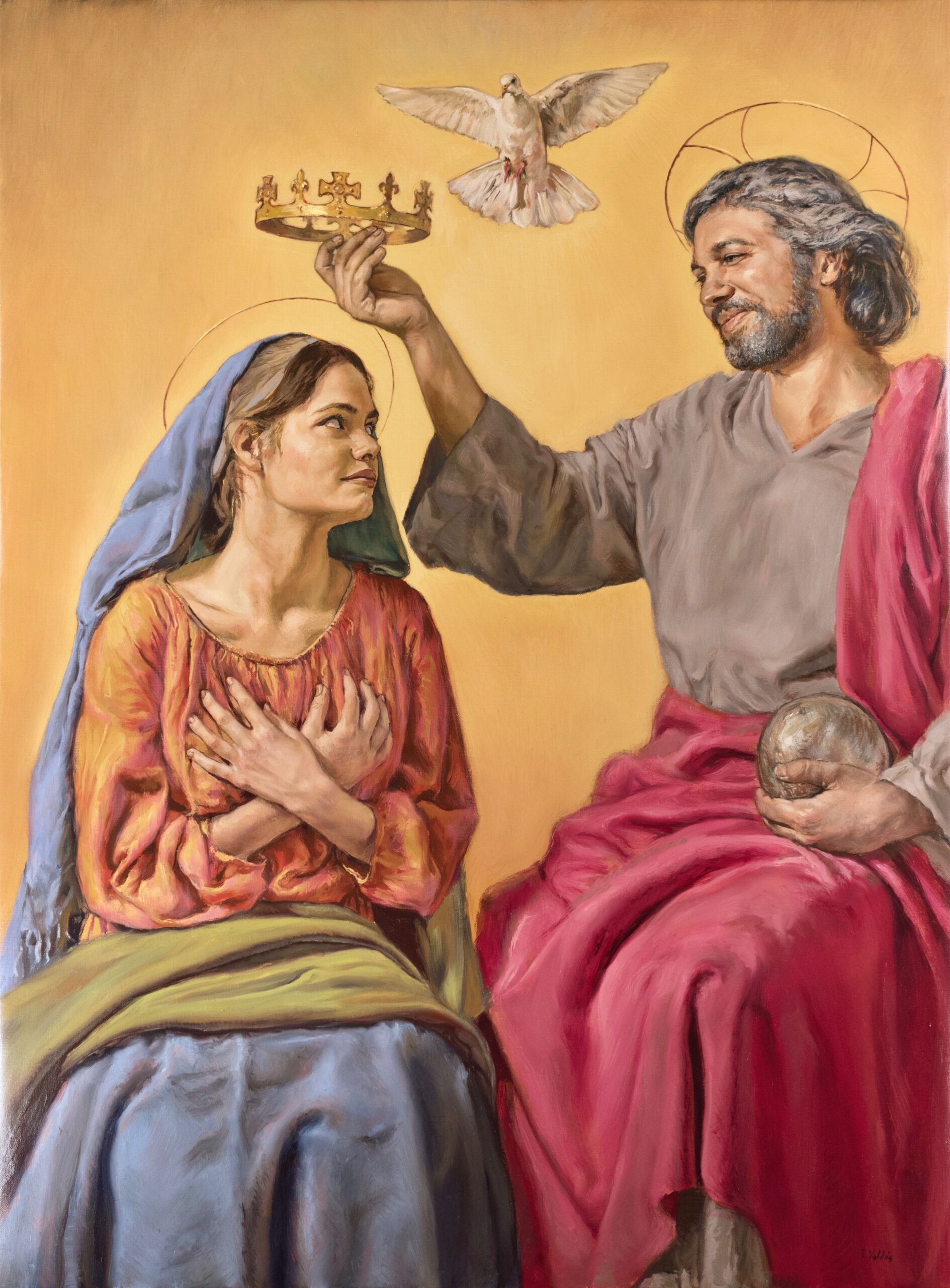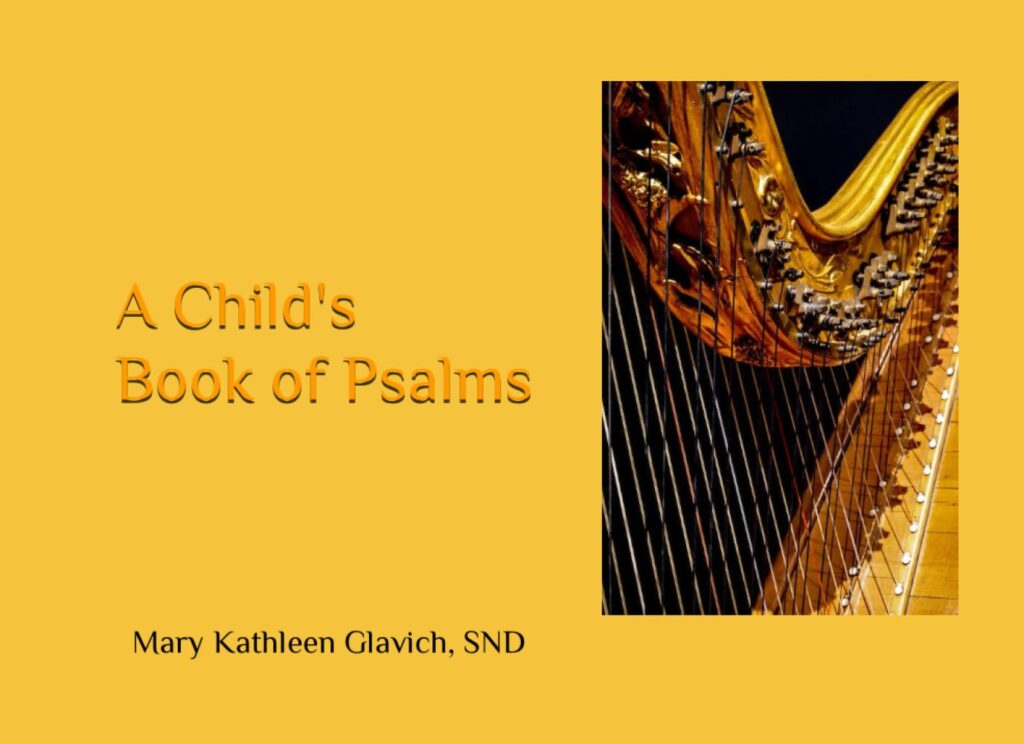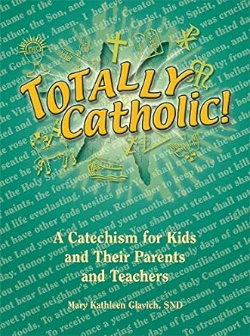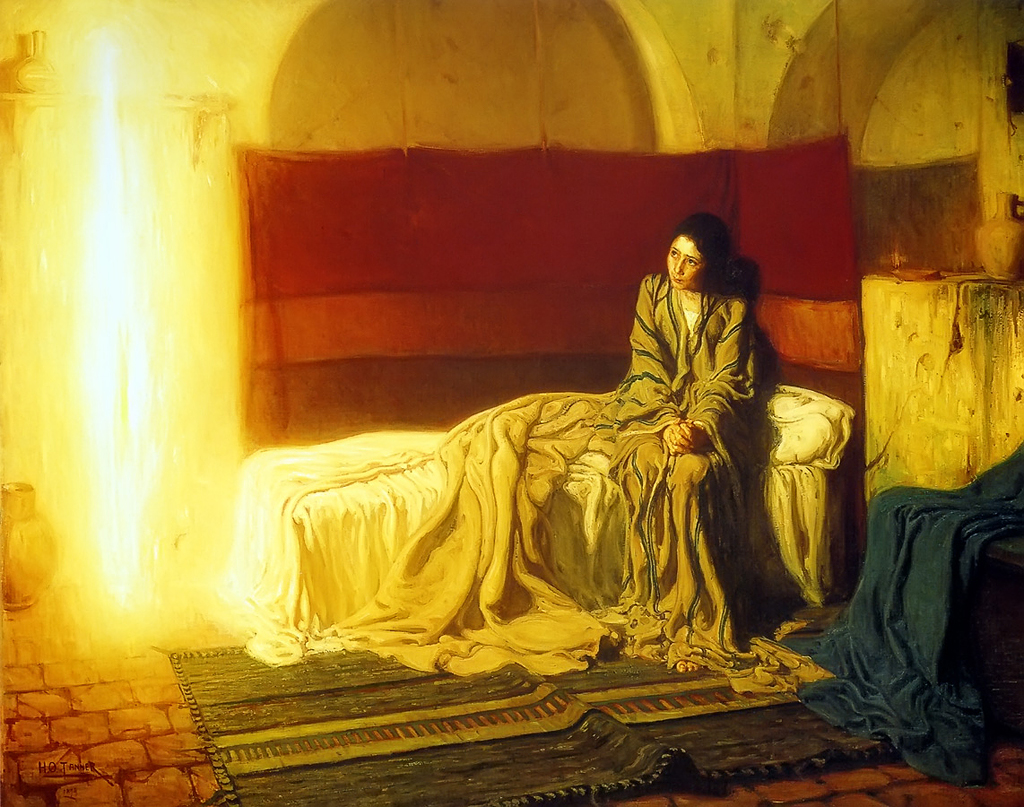
Monsignor Moriarty, the censor and advisor for our Christ Our Life series, was adamant that we refer to March 25 as the Annunciation of the Lord. We usually associate this solemnity with the Blessed Virgin Mary. But it’s really the celebration of the first moment of the Incarnation, when almighty God initiates the process of becoming one of us, a human being. So it is primarily a feast of Jesus. The day occurs exactly nine months before we celebrate his birth at Christmas.
At Mass in our chapel on March 25 the priest included in his homily an explanation of a painting of the Annunciation created by the African-American artist Henry Ossawa Tanner. I’ve seen it but never understood the symbolism before. I found it interesting and you might too.
The fact that Mary was a peasant girl, a nobody in the middle of nowhere, is obvious in the painting. The room is poor and like a Palestine home: a cobblestone floor and cracked, stained walls. In most depictions of the Annunciation, Mary is praying, at the well, or sitting demurely. Tanner portrays Mary sitting on the edge of her bed, apparently just awakened. The bedclothes are rumpled and her hair is unbound, and she does not wear a veil—or a halo. The carpet is creased to form two sides, perhaps hinting at the division between divinity and humanity. Mary’s bare foot with toes peeking out touches the floor: suggesting that Mary is not a goddess but a flesh-and-blood girl, grounded on earth. This is stressed by the red tapestry that forms the backdrop for her. In art, red represents humanity while blue stands for divinity.
Mary looks like the young girl she was. Naturally, she is perplexed by the proposal that she become the mother of God: the most earth-shattering event in the cosmos and in all history. Her head is tilted and her face reflects humble submission. Facing the heavenly visitor, Mary assumes an attitude of prayer with her hands clasped and knees together. Her blue-striped gown resembles the prayer shawl the Israelites wore.
The angel does not appear like a man (the Gospel doesn’t say he did). Rather, as a spirit, he is represented as a pillar of light. If you look at the upper left-hand corner, there is a shelf that intersects with the light and forms a cross, a hint of the baby’s future. No dove for the Holy Spirit is in the painting. However, three plain clay pots are positioned to form a triangle, symbolizing the Trinity. These pots remind us that Mary is becoming a vessel for God-made-man. So does her clothing, the blue stripes on her gown and the royal blue cloak. The Ark of the Covenant, which was the site of God’s presence for the Israelites, was covered with a blue cloth. Likewise, Mary became the house of God that day.
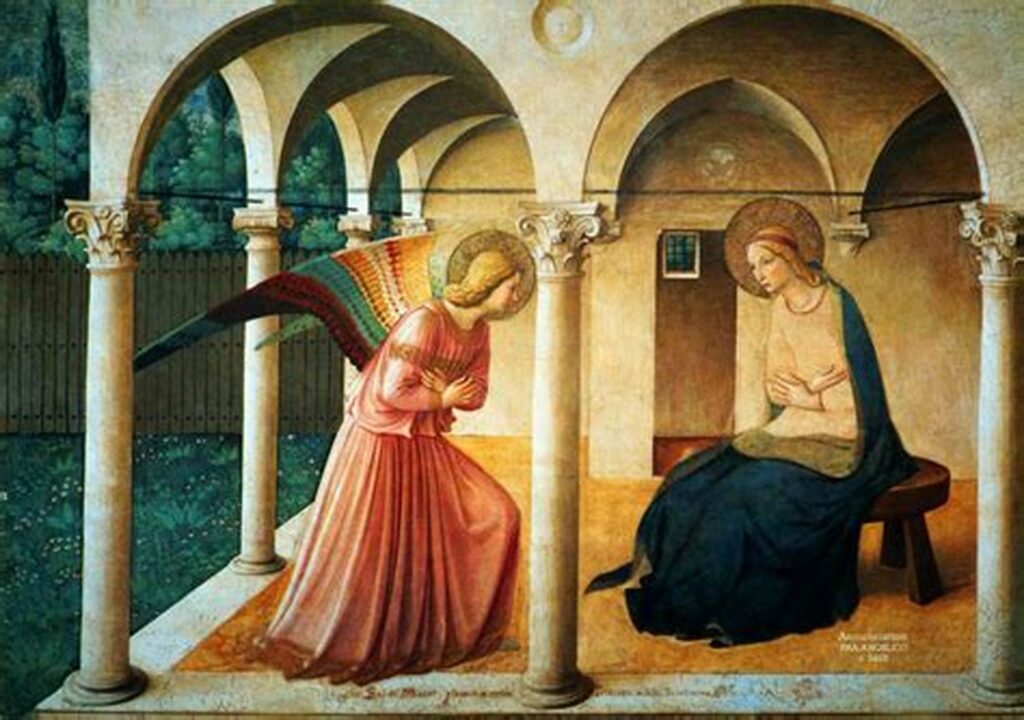
Our Christian faith tells us that we too are temples of God. We are called to bring Christ into the world—to incarnate him. What does that mean? Christ taught, healed, served, and loved.
–We have opportunities to teach—to tell others about the good God and the good news of salvation.
– Although we can’t work miracles, we can bring relief and comfort to those who are hurting physically or mentally.
– We can serve in myriad ways in our own families, neighborhoods, and communities.
– And, of course, we can wrap others in our love by supporting them, telling them of our love, and forgiving them.
• How can you bring Christ into our modern world that so needs his presence?


